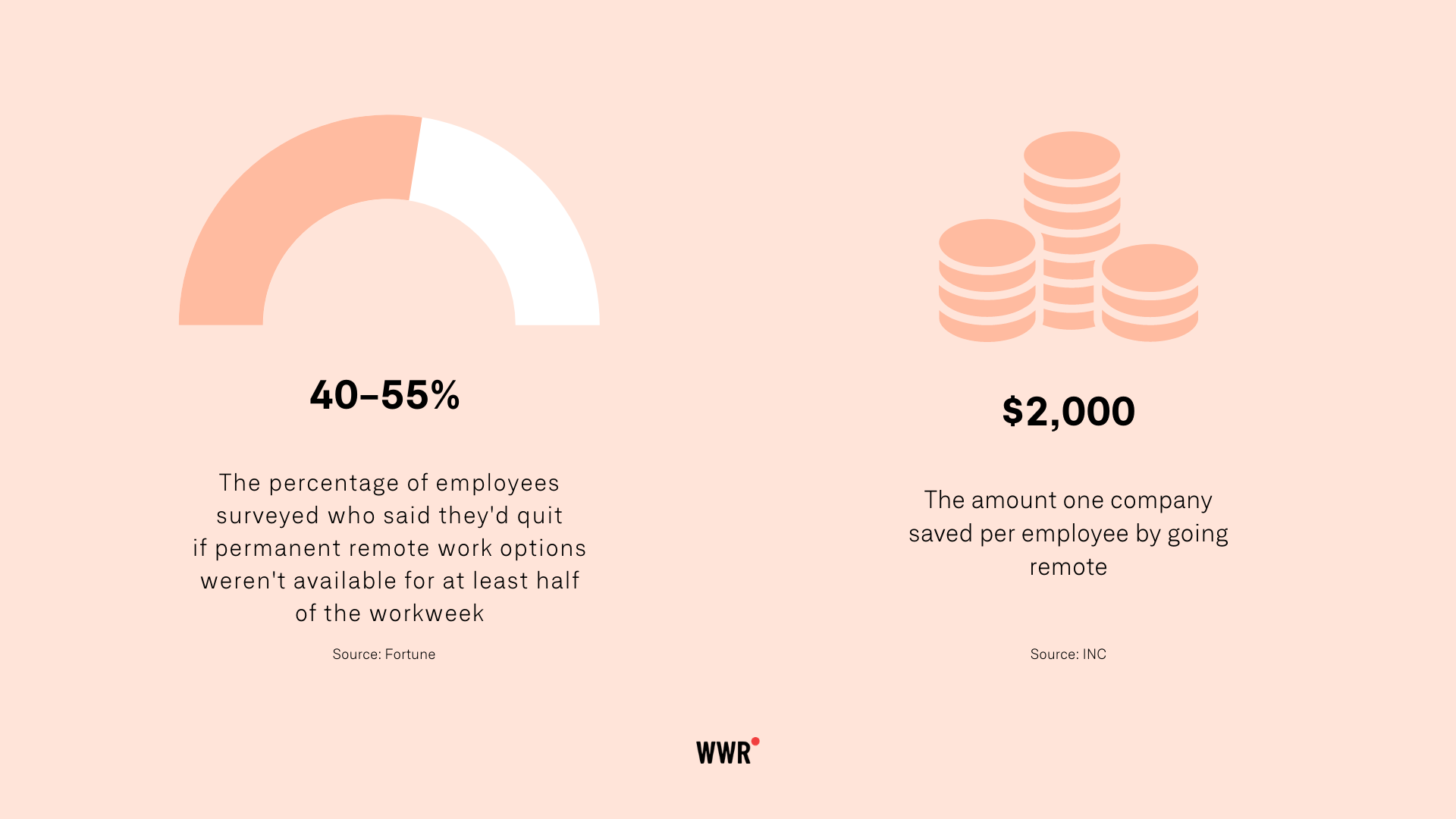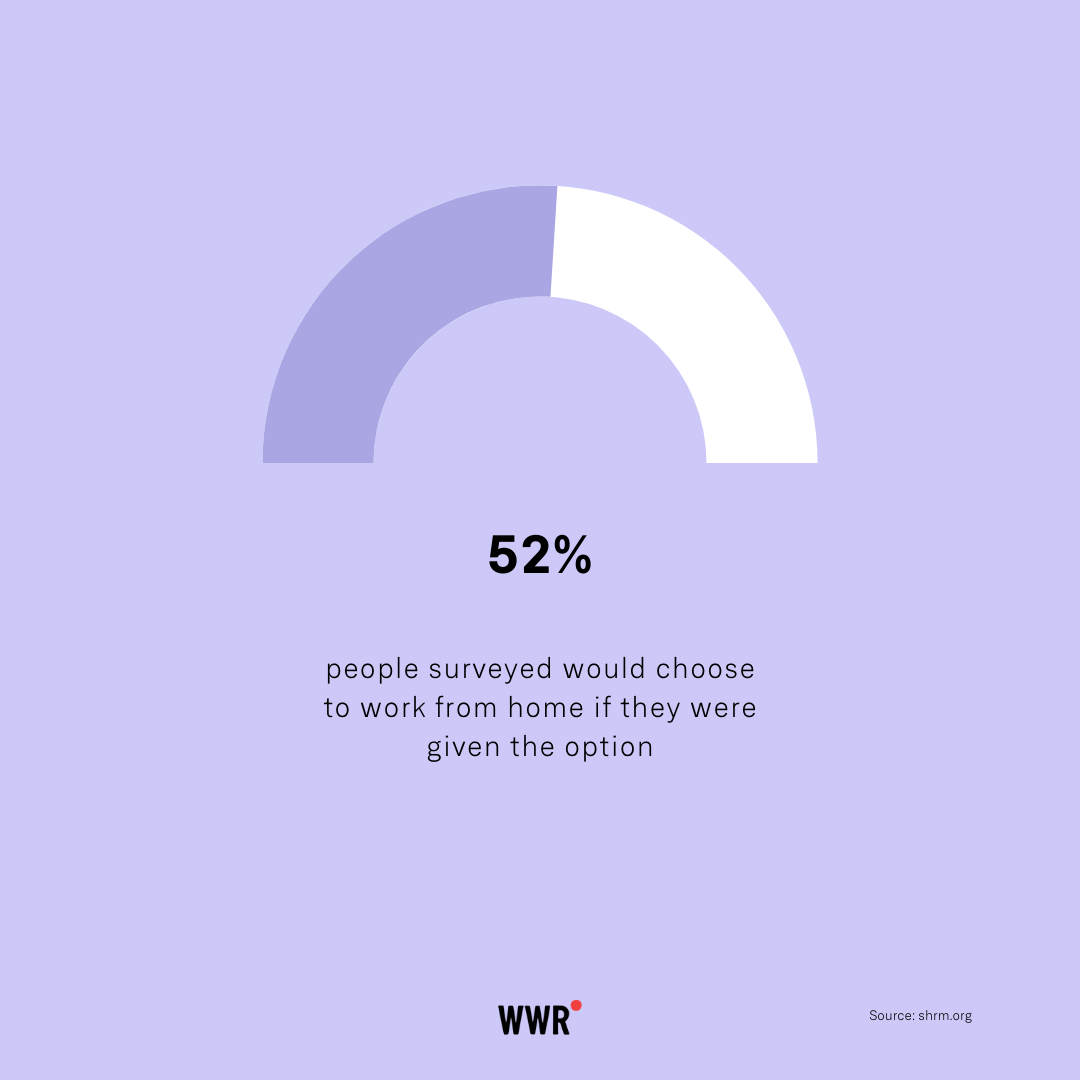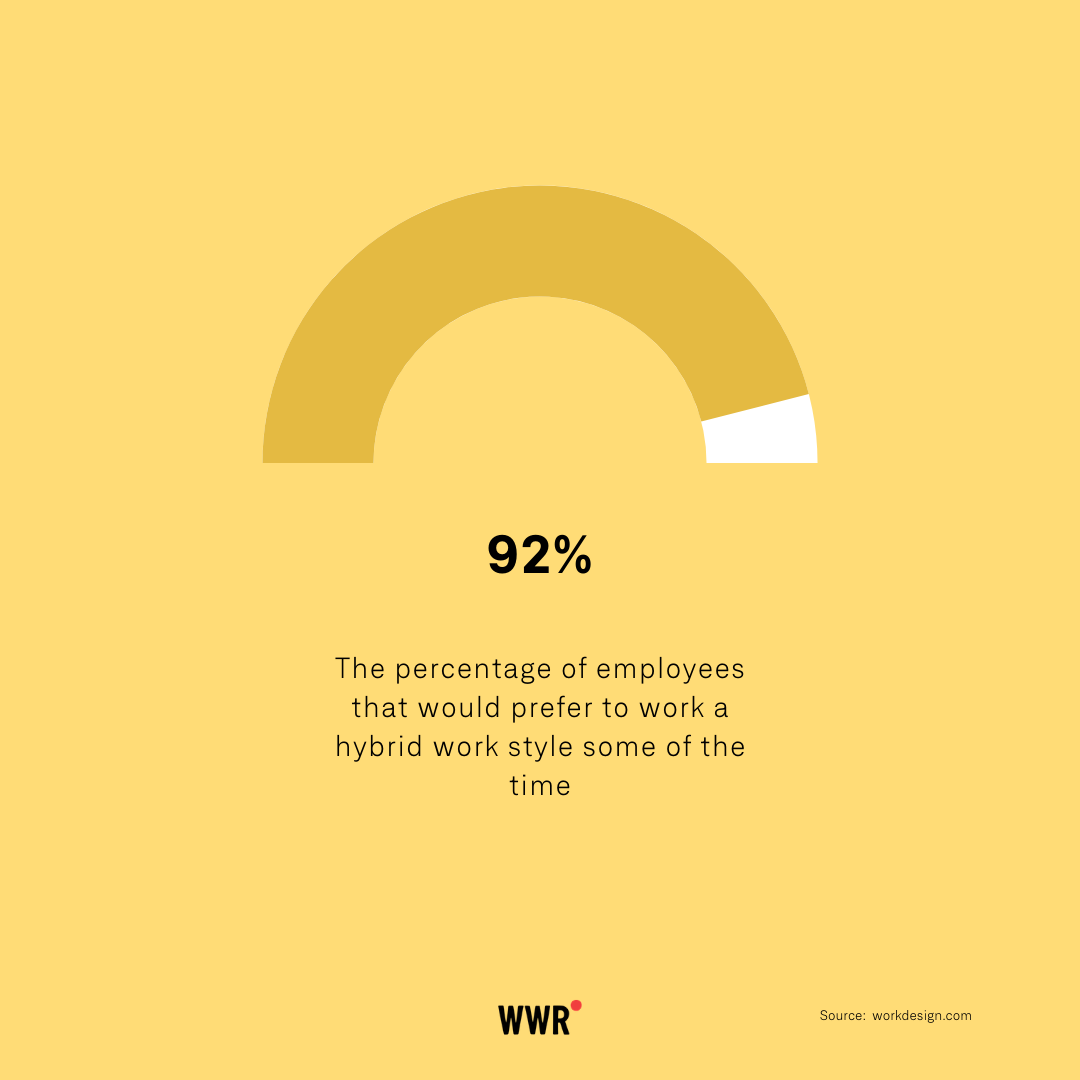The State of Remote Work - June 2021 Q2 Quarterly Report
State of the Remote Work Reports
Welcome Back to Our 4th Edition of Our State of Remote Work Report!
It’s our fourth time revisiting the State of Remote Work, and the landscape has changed so much since our last report.
In our previous editions, we analyzed how COVID-19 impacted remote work, what happened mid-way through the pandemic, and the results one year later. Now we’re diving into what life looks like as more states finally ease out of restrictions and head “back to normal.”
You’ll notice that our fourth State of Remote Work Report is much shorter and more impactful this time around. We know you’re busy, and your time is valuable. You’ll find quick stats and snippets of everything you need to know, so you can sip your coffee and get up-to-date in less time.
Enjoy!
The Top 5 Remote Work Trends As Of June 2021

Check out these stats on remote work in Q2 of 2021:
1. 1 in 2 people won’t return to their jobs if working remotely isn’t an option.

Now that employees have had a taste of working remotely, they don’t want to give it up.
- Owl Labs reported that 1 in 2 people may quit their current jobs if they can’t work remotely moving forward.
- Bloomberg confirmed this when they learned that 39% of 1,000 employees surveyed would jump ship if their boss wasn’t flexible about their working remotely.
2. 52% of 1,000 people surveyed would choose to work from home if they were given the option.

- Over half of the people surveyed admitted that they want to work from home.
- 35% said they’d even take a pay cut to do so.
- 66% reported that they would like to work from home even if they were vaccinated and we achieved herd immunity.
3. Work-from-home employees saw a significant productivity boost, and employee attrition decreased by 50%.

A two-year study out of Stanford validated that working from home doesn’t negatively impact productivity. In fact, just the opposite happens -- people are significantly more productive working remotely.
Furthermore, those Stanford researchers noticed employee attrition decreased by 50%. The company they studied even managed to save $2,000 per employee who turned remote.
4. 92% of employees surveyed would prefer to work a hybrid work style some of the time.

If employees can’t get the full remote status they’re hoping for, 92% surveyed said they’ll settle for a hybrid approach. What’s more, 63% of high-growth companies are already using hybrid work models with great success.
5. 77% of people surveyed said that working from home post-COVID would make them happier.

Productivity isn’t the only metric that soars when employees start working remotely -- 77% of people surveyed said that being able to work from home makes them happier.
A Year and A Half Later, Employees Prefer a Hybrid Work Model If They Can’t Be 100% Remote
While some companies have stayed 100% remote and others have returned to the office, most people surveyed would prefer a hybrid work model if they can’t be fully remote. Recent stats show:
✔️ 59% of employees want the flexibility to go back and forth between working from home and at the office.
✔️ 48% said they’d like to work remotely a few days per week, and 41% would accept a lower salary to do so.
✔️ 1,200 people surveyed admitted they’d like to work remotely at least three days per week.
This latest batch of statistics highlights that employees are now craving more remote work options. And with so many willing to quit their jobs if they don’t get the flexibility to work from home, we may see an influx of candidates leaving their in-house positions to enter the remote workforce very soon.
8 Recent News Articles About Remote Work and The Hybrid Remote Work Model
Check out these trending news articles about the state of remote work and the emerging hybrid approach quickly gaining traction:
- Google Relaxes Remote Work Plan, Will Let 20% of Employees Telecommute
- Employees Are Quitting Instead of Giving Up Working From Home
- The Workplace of 2021 Will Be Remote, At the Office, or a Hybrid of Both
- The Unintended Consequences Of The Hybrid-Work Model
- How to Do Hybrid Right
- Here’s What to Watch For in the World of Hybrid Work
- How to Manage the New Hybrid Workplace
- The Hybrid Work Model: Ready or Not, Here It Comes
Final Thoughts on the Current State and Future of Remote Work
We’ve seen a massive shift in how work gets done since our first report. Back then, companies had no choice but to turn to remote work when the Coronavirus was ripping through nations and forcing everyone into lockdowns.
The majority of companies experimented with 100% remote work, but now many are starting to ease back into traditional office life. However, employees are no longer interested in sitting in tiny cubicles and clocking in a standard 9 to 5.
Employees learned first-hand that working from home allowed them to become more productive and happier. They got to create a healthier work-life balance, and some even experimented with a new schedule. All these perks now make it difficult to go back to the old ways of getting things done.
Moving forward, many companies must face the decision to use a hybrid work model or consider going 100% remote, or risk losing their best team members.
We have a feeling that the hybrid work model and even going 100% remote will continue to rise. We’ll be watching these trends and share our findings in our next State of Remote Work report. So keep an eye out for that next quarter!
Do you think remote work and the hybrid work model are here to stay? Will they gain even more traction by our next report? Let us know your thoughts!
← Back to Blog